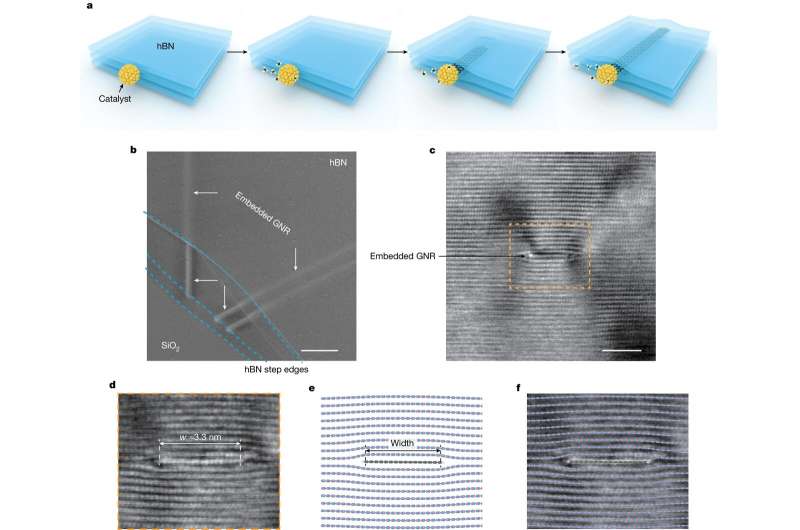
An international collaborative study that features researchers from Tel Aviv University (TAU), presented a new method for growing ultra-long and ultra-narrow strips of graphene (a derivative of graphite), which exhibit semiconducting properties that can be harnessed by the nanoelectronics industry. The researchers believe that the development may have many potential technological applications, including advanced switching devices, spintronic devices, and in the future, even quantum computing architectures.
The study was conducted under the leadership of an international research team that included Prof. Michael Urbakh and Prof. Oded Hod from TAU’s School of Chemistry, as well as scientists from China, South Korea, and Japan. The study was published in the journal Nature.
Prof. Urbakh and Prof. Hod explain that graphene is actually a single layer of graphite made of carbon atoms and built similar to the shape of a beehive. Graphene is very suitable for technological uses.
Apart from its extraordinary mechanical strength, additional properties have been discovered in recent years regarding certain structures made of a small number of twisted (laterally rotated with respect to each other) graphene layers. These properties include superconductivity, spontaneous electric polarization, controlled heat conduction, and structural superlubricity—a state in which materials demonstrate negligible friction and wear.
One of the limitations for the use of graphene in the electronics industry is that it is a semi-metal, namely that charge carriers can move freely in it, but their density is very low. Hence, graphene cannot be used either as a conducting metal or as a semiconductor used by the electronic chip industry.
However, if long and thin strips of graphene (termed graphene nanoribbons) are cut out of a wide graphene sheet, the quantum charge carriers become confined within the narrow dimension, which makes them semi-conducting and enables their use in quantum switching devices. As of today, there are a number of barriers to using graphene nanoribbons in devices, among them is the challenge of reproducibly growing narrow and long sheets that are isolated from the environment.
In this new study, the researchers were able to develop a method to catalytically grow narrow, long, and reproducible graphene nanoribbons directly within insulating hexagonal boron-nitride stacks, as well as demonstrate peak performance in quantum switching devices based on the newly-grown ribbons. The unique growth mechanism was revealed using advanced molecular dynamics simulation tools that were developed and implemented by the Israeli teams.
These calculations showed that ultra-low friction in certain growth directions within the boron-nitride crystal dictates the reproducibility of the structure of the ribbon, allowing it to grow to unprecedented lengths directly within a clean and isolated environment.
The researchers see the development as a scientific and technological breakthrough in the field of nanomaterials, one which is expected to open the door to a wide range of studies that will lead to their utilization in the nanoelectronics industry.
Prof. Urbakh and Prof. Hod summarize, “The importance of this new development is that for the first time, it is now possible to fabricate carbon-based nanoelectronic switching devices directly within an isolating matrix. These devices will likely have many technological applications, including electronic and spintronic systems, and even quantum computing devices.”

